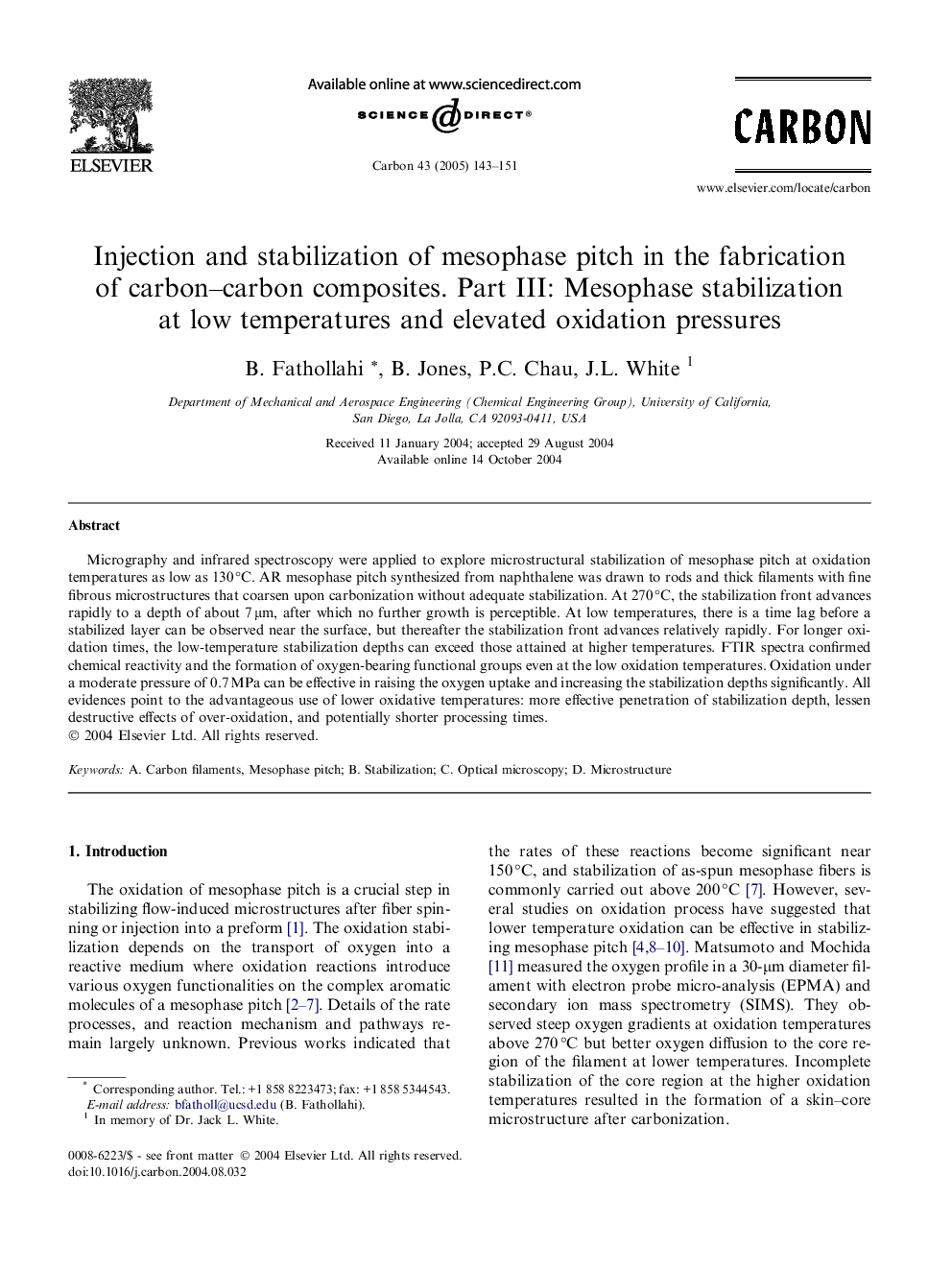| Article ID | Journal | Published Year | Pages | File Type |
|---|---|---|---|---|
| 10611049 | Carbon | 2005 | 9 Pages |
Abstract
Micrography and infrared spectroscopy were applied to explore microstructural stabilization of mesophase pitch at oxidation temperatures as low as 130 °C. AR mesophase pitch synthesized from naphthalene was drawn to rods and thick filaments with fine fibrous microstructures that coarsen upon carbonization without adequate stabilization. At 270 °C, the stabilization front advances rapidly to a depth of about 7 μm, after which no further growth is perceptible. At low temperatures, there is a time lag before a stabilized layer can be observed near the surface, but thereafter the stabilization front advances relatively rapidly. For longer oxidation times, the low-temperature stabilization depths can exceed those attained at higher temperatures. FTIR spectra confirmed chemical reactivity and the formation of oxygen-bearing functional groups even at the low oxidation temperatures. Oxidation under a moderate pressure of 0.7 MPa can be effective in raising the oxygen uptake and increasing the stabilization depths significantly. All evidences point to the advantageous use of lower oxidative temperatures: more effective penetration of stabilization depth, lessen destructive effects of over-oxidation, and potentially shorter processing times.
Related Topics
Physical Sciences and Engineering
Energy
Energy (General)
Authors
B. Fathollahi, B. Jones, P.C. Chau, J.L. White,
